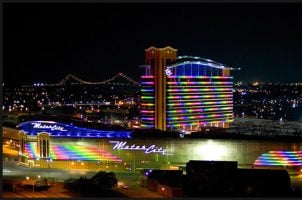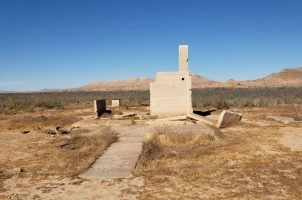Pennsylvania Casinos on Track with Hiring Goals, But Still Work To Do
Posted on: October 12, 2021, 11:40h.
Last updated on: October 12, 2021, 02:50h.
Pennsylvania’s gaming industry continues to grow by way of new land-based casinos. But when it comes to diversity, a new report shows it’s been business as usual.

The Pennsylvania Gaming Control Board (PGCB) oversees one of the nation’s largest gaming markets. The agency recently released its 2020-21 Diversity Report, which breaks down the sector’s employment data.
As of June 30, 2021, Pennsylvania’s brick-and-mortar casinos collectively employed 13,870 people. Eighty-seven percent of the workforce resides within the commonwealth.
Nearly nine out of 10 gaming industry workers believe Pennsylvania is on target with the state gaming industry’s employment goals. A pillar of the state legalizing commercial gambling through its 2004 Gaming Act was to generate new jobs for state residents.
Those jobs, however, were also to be held by a diverse group of people. The 2020-21 Diversity Report shows that while the overall hiring quotas accurately reflect the racial percentages of the population, there’s room for improvement in management positions.
Little Change from Previous Years
Pennsylvania’s 2004 legislation, which initially authorized slot machines only, was designed to help revive the state’s horse racing industry and provide property tax relief for homeowners.
An added benefit of the bill was new jobs — thousands of them. State lawmakers included specific diversity goals in the gaming measure that was signed into law 17 years ago by then-Gov. Ed Rendell (D).
“Each licensed gaming entity shall prepare a hiring plan for employees of its respective licensed facility which promotes a diverse workforce, minority participation, and personnel from within the surrounding geographical area,” the law states.
As of the end of June, 61 percent of casino workers in Pennsylvania identified as Caucasian. That’s down two percent from 2017-18. Only 15 percent reported being Black, 14 percent said they were of Asian descent, and seven percent claimed Hispanic heritage. As for gender, 58 percent said they were male.
The latest casino employment data doesn’t reveal much deviation from previous annual reports.
In 2017-18, Caucasians accounted for 63 percent of the workforce, Blacks 14 percent, Asians 12 percent, and Hispanics eight percent. Fifty-seven percent of the casino labor reported being men.
Only three casinos in 2020-21 — Live! Casino Philadelphia, Valley Forge Casino Resort, and Rivers Casino Philadelphia — reported having more minority workers than Caucasian employees. Perhaps most concerning is that 75 percent of jobs at the management level or higher were held by Caucasians, and only 36 percent of the executive pool were female.
Ongoing Diversity Efforts
Mozelle Daniels, director of diversity for the PGCB, says the state agency will continue to monitor hiring and support casinos in their diversity efforts. Many casinos are seeking new applicants, as labor shortages linger across the commonwealth.
The pandemic ushered in an era of COVID-19 protocols and procedures, shutdowns, limited operations, remote/hybrid work schedules, labor shortages, hiring incentives, and other economic disruptions or changes, all of which continue to impact the overall employee total,” Daniels explained.
While white males represent the majority of the casino workforce, compared with state demographics, the gaming industry statistics demonstrate its commitment to hiring people from all walks of life.
The US Census Bureau reports that whites represent 75.7 percent of the Pennsylvania population. Blacks account for only 12 percent, Hispanics 7.8 percent, and Asians just four percent.
Related News Articles
Norfolk Casino Ballot Referendum Campaign Underway, City and Tribe ‘All-In’
Newsday Slams New York Casino Process
Most Popular
Las Vegas Overstated F1 Race’s Vegas Impact — Report
Vegas Strip Clubs Wrestle in Court Over Animal Names
Mega Millions Reportedly Mulling Substantial Ticket Price Increase
Las Vegas Strip Stabbing Near The Strat Leaves One Man Dead
Most Commented
-
End of the Line for Las Vegas Monorail
— April 5, 2024 — 90 Comments -
Mega Millions Reportedly Mulling Substantial Ticket Price Increase
— April 16, 2024 — 6 Comments -
Long Island Casino Opponents Love New York Licensing Delays
— March 27, 2024 — 5 Comments -
Nearly Abandoned Mall Outside Vegas Soon to Have Only One Tenant
— March 12, 2024 — 5 Comments
















No comments yet